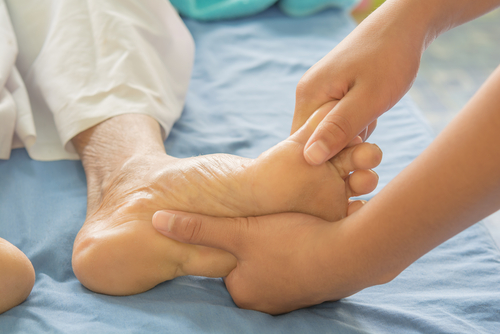Blog
What Causes Ankle Pain?
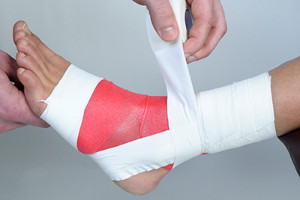 There are different forms of ankle pain, and they can occur for a variety of different reasons. For example, an ankle sprain is a common injury that can happen as a result of falling and twisting the ankle. The ligaments can tear or stretch, and this generally causes severe pain and discomfort. If the joints surrounding the ankle become inflamed, a condition known as arthritis may be present. The most common forms of this condition are rheumatoid arthritis and osteoarthritis. Additionally, gout is a painful condition that affects the big toe primarily, but can affect the ankle as well. It can occur as a result of specific foods that are eaten. Some patients develop tendonitis in the ankle, which can cause difficulty in moving the lower portion of the foot. If you are experiencing ankle pain for any reason, it is advised to speak to a podiatrist who can guide you toward beginning the correct treatment.
There are different forms of ankle pain, and they can occur for a variety of different reasons. For example, an ankle sprain is a common injury that can happen as a result of falling and twisting the ankle. The ligaments can tear or stretch, and this generally causes severe pain and discomfort. If the joints surrounding the ankle become inflamed, a condition known as arthritis may be present. The most common forms of this condition are rheumatoid arthritis and osteoarthritis. Additionally, gout is a painful condition that affects the big toe primarily, but can affect the ankle as well. It can occur as a result of specific foods that are eaten. Some patients develop tendonitis in the ankle, which can cause difficulty in moving the lower portion of the foot. If you are experiencing ankle pain for any reason, it is advised to speak to a podiatrist who can guide you toward beginning the correct treatment.
Ankle pain can be caused by a number of problems and may be potentially serious. If you have ankle pain, consult with one of our podiatrists from Westside Podiatry Center, LLP. Our doctors will assess your condition and provide you with quality foot and ankle treatment.
Ankle pain is any condition that causes pain in the ankle. Due to the fact that the ankle consists of tendons, muscles, bones, and ligaments, ankle pain can come from a number of different conditions.
Causes
The most common causes of ankle pain include:
- Types of arthritis (rheumatoid, osteoarthritis, and gout)
- Ankle sprains
- Broken ankles
- Achilles tendinitis
- Achilles tendon rupture
- Stress fractures
- Bursitis
- Tarsal tunnel syndrome
- Plantar fasciitis
Symptoms
Symptoms of ankle injury vary based upon the condition. Pain may include general pain and discomfort, swelling, aching, redness, bruising, burning or stabbing sensations, and/or loss of sensation.
Diagnosis
Due to the wide variety of potential causes of ankle pain, podiatrists will utilize a number of different methods to properly diagnose ankle pain. This can include asking for personal and family medical histories and of any recent injuries. Further diagnosis may include sensation tests, a physical examination, and potentially x-rays or other imaging tests.
Treatment
Just as the range of causes varies widely, so do treatments. Some more common treatments are rest, ice packs, keeping pressure off the foot, orthotics and braces, medication for inflammation and pain, and surgery.
If you have any questions, please feel free to contact one of our offices located in Liverpool, Camillus, Skaneateles, Oswego, and Cicero, NY . We offer the newest diagnostic and treatment technologies for all your foot care needs.
Mandatory Education Required for Podiatrists
 People who are interested in treating disorders of the feet and ankles may consider a career as a podiatrist. They are referred to as Doctors of Podiatric Medicine, and often have the initials DPM following their name. Many podiatrists are able to perform specific types of surgery to correct foot and ankle conditions, in addition to prescribing medicine. Mandatory education consists of achieving a bachelor's degree, followed by enrolling in a college of podiatric medicine. It is beneficial to possess certain life skills which can consist of compassion, becoming detail-oriented, and having critical-thinking skills. If you have questions about pursuing this type of career, please consult with a podiatrist who can help you to determine if this is the best choice for you.
People who are interested in treating disorders of the feet and ankles may consider a career as a podiatrist. They are referred to as Doctors of Podiatric Medicine, and often have the initials DPM following their name. Many podiatrists are able to perform specific types of surgery to correct foot and ankle conditions, in addition to prescribing medicine. Mandatory education consists of achieving a bachelor's degree, followed by enrolling in a college of podiatric medicine. It is beneficial to possess certain life skills which can consist of compassion, becoming detail-oriented, and having critical-thinking skills. If you have questions about pursuing this type of career, please consult with a podiatrist who can help you to determine if this is the best choice for you.
If you are experiencing pain in the feet or ankles, don’t join the stubborn majority refusing treatment. Feel free to contact one of our podiatrists from Westside Podiatry Center, LLP. Our doctors can provide the care you need to keep you pain-free and on your feet.
What Is a Podiatrist?
Someone would seek the care of a podiatrist if they have suffered a foot injury or have common foot ailments such as heal spurs, bunions, arch problems, deformities, ingrown toenails, corns, foot and ankle problems, etc.
Podiatric Treatment
A podiatrist will treat the problematic areas of the feet, ankle or lower leg by prescribing the following:
- Physical therapy
- Drugs
- Orthotic inserts or soles
- Surgery on lower extremity fractures
A common podiatric procedure a podiatrist will use is a scanner or force plate which will allow the podiatrist to know the designs of orthotics. Patients are then told to follow a series of tasks to complete the treatment. The computer will scan the foot a see which areas show weight distribution and pressure points. The podiatrist will read the analysis and then determine which treatment plans are available.
If you have any questions please feel free to contact one of our offices located in Liverpool, Camillus, Skaneateles, Oswego, and Cicero, NY . We offer the newest diagnostic and treatment technologies for all your foot and ankle needs.
Possible Symptoms of a Heel Spur
 A small growth, generally made of calcium, which forms between the arch of the foot and the heel may be referred to as a heel spur. Common symptoms that affect many patients with this condition can consist of pain in the heel, which may be more intense after arising in the morning, followed by a dull ache that can last most of the day. Additionally, there is often swelling in the heel and surrounding areas, and it may be painful when touched. A heel spur may occur as a result of gradual strain that affects the soft tissues in the heel, and from the formation of calcium deposits. Patients who are overweight, wear improper footwear, or who have endured an injury to the heel, may be more susceptible to developing this condition. If you feel you have this ailment and would like to learn about effective treatment methods, it is suggested that you consult with a podiatrist.
A small growth, generally made of calcium, which forms between the arch of the foot and the heel may be referred to as a heel spur. Common symptoms that affect many patients with this condition can consist of pain in the heel, which may be more intense after arising in the morning, followed by a dull ache that can last most of the day. Additionally, there is often swelling in the heel and surrounding areas, and it may be painful when touched. A heel spur may occur as a result of gradual strain that affects the soft tissues in the heel, and from the formation of calcium deposits. Patients who are overweight, wear improper footwear, or who have endured an injury to the heel, may be more susceptible to developing this condition. If you feel you have this ailment and would like to learn about effective treatment methods, it is suggested that you consult with a podiatrist.
Heel spurs can be incredibly painful and sometimes may make you unable to participate in physical activities. To get medical care for your heel spurs, contact one of our podiatrists from Westside Podiatry Center, LLP. Our doctors will do everything possible to treat your condition.
Heels Spurs
Heel spurs are formed by calcium deposits on the back of the foot where the heel is. This can also be caused by small fragments of bone breaking off one section of the foot, attaching onto the back of the foot. Heel spurs can also be bone growth on the back of the foot and may grow in the direction of the arch of the foot.
Older individuals usually suffer from heel spurs and pain sometimes intensifies with age. One of the main condition's spurs are related to is plantar fasciitis.
Pain
The pain associated with spurs is often because of weight placed on the feet. When someone is walking, their entire weight is concentrated on the feet. Bone spurs then have the tendency to affect other bones and tissues around the foot. As the pain continues, the feet will become tender and sensitive over time.
Treatments
There are many ways to treat heel spurs. If one is suffering from heel spurs in conjunction with pain, there are several methods for healing. Medication, surgery, and herbal care are some options.
If you have any questions feel free to contact one of our offices located in Liverpool, Camillus, Skaneateles, Oswego, and Cicero, NY . We offer the latest in diagnostic and treatment technology to meet your needs.
The Three Grades of Ankle Sprains
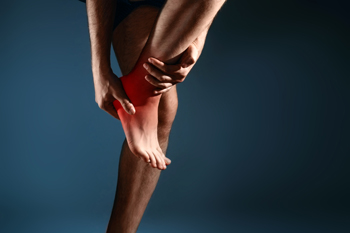 When an ankle sprain occurs, it is categorized as one of three grades. A mild sprain is referred to as a grade one sprain, and will generally heal in approximately 3 weeks. If the ligaments incur damage, it is known as a grade two sprain, and recovery will take several weeks. Grade three sprains are considered to be severe, and may include a bone fracture and extensive ligament damage. As the healing process occurs, it is beneficial to begin and maintain foot exercises and stretches. These can include improving your range of motion, in addition to gaining strength and balance in the affected ankle. If you have sprained your ankle, it is strongly suggested that you consult with a podiatrist as quickly as possible, who can recommend the best course of treatment for you.
When an ankle sprain occurs, it is categorized as one of three grades. A mild sprain is referred to as a grade one sprain, and will generally heal in approximately 3 weeks. If the ligaments incur damage, it is known as a grade two sprain, and recovery will take several weeks. Grade three sprains are considered to be severe, and may include a bone fracture and extensive ligament damage. As the healing process occurs, it is beneficial to begin and maintain foot exercises and stretches. These can include improving your range of motion, in addition to gaining strength and balance in the affected ankle. If you have sprained your ankle, it is strongly suggested that you consult with a podiatrist as quickly as possible, who can recommend the best course of treatment for you.
Although ankle sprains are common, they aren’t always minor injuries. If you need your ankle injury looked at, contact one of our podiatrists from Westside Podiatry Center, LLP. Our doctors can provide the care you need to keep you pain-free and on your feet.
How Does an Ankle Sprain Occur?
Ankle sprains are the result of a tear in the ligaments within the ankle. These injuries may happen when you make a rapid shifting movement while your foot is planted. A less common way to sprain your ankle is when your ankle rolls inward while your foot turns outward.
What Are the Symptoms?
- Pain at the sight of the tear
- Bruising/Swelling
- Ankle area is tender to touch
- In severe cases, may hear/feel something tear
- Skin discoloration
Preventing a Sprain
- Wearing appropriate shoes for the occasion
- Stretching before exercises and sports
- Knowing your limits
Treatment of a Sprain
In many cases, the RICE method (Rest, Ice, Compression, and Elevate) is used to treat ankle sprains. However, you should see a podiatrist to see which treatment option would work best with your injury. In severe cases, surgery may be required.
It is important to ask your doctor about rehab options after you receive treatment for your injury. Stretching, strength training, and balance exercises may help the ankle heal while also preventing further injury.
If you have any questions, please feel free to contact one of our offices located in Liverpool, Camillus, Skaneateles, Oswego, and Cicero, NY . We offer the newest diagnostic and treatment technologies for all your foot care needs.
A Massage for Arch Pain
Foot massages can be relaxing, but did you know that they can also benefit your foot health? A foot massage can help stretch and relax the feet, leading to less foot pain. If you experience pain or tension in the arch of your foot, you may want to try an arch massage. This is done by holding the top of the foot in one hand and rubbing the length of the arch with the fingers of the other hand. Repeat this several times on each foot, going from the heel to the arch. For more information about the benefits of foot massage, consult with a podiatrist today.
Foot therapy is often necessary for those recovering from either foot deformities or foot injuries. If you have concerns regarding therapy, consult with one of our podiatrists from Westside Podiatry Center, LLP. Our doctors can provide the care you need to keep you pain-free and on your feet.
Most Common Injuries
People who are active or athletes are prone to a variety of injuries. Therefore, it is often important to take part in physical therapy in order to quickly get back on the right track.
What to Do When Injured
Physical Therapy – This specialized treatment will focus on the affected area, speeding up recovery and the overall healing process. It is a proven method that has helped millions of people return from any injury.
During physical therapy you will undergo regimented training to get back into full form. Training is often very difficult, especially at first when the foot feels weak. Physical therapy often involves:
Basic stretching and twisting exercises – getting the feet’s mobility and flexibility up.
Massaging – the therapist will massage the injured area in order to activate the muscles and relax them.
Strengthening Exercises – this allows the muscles in the affected area to regain their full strength, a vital step towards full recovery.
If you have any questions please feel free to contact one of our offices located in Liverpool, Camillus, Skaneateles, Oswego, and Cicero, NY . We offer the newest diagnostic tools and technology to treat your foot and ankle needs.
Various Treatment Methods For Broken Toes
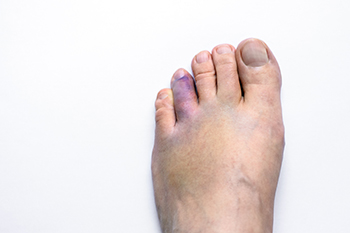
Most people notice immediately if they have broken a toe. Broken toes typically occur when the toe is stubbed into a piece of furniture or when something heavy is dropped on them. The symptoms are noticeable and often include immediate swelling, bruising, and difficulty in walking. Pain generally accompanies a broken toe, but it may feel better when the toe is elevated. This can also help reduce swelling and discomfort. In severe fractures, the toe may protrude and appear to be displaced, and surgery may be required to move the bone back into place. An effective treatment method for mild breaks is known as buddy taping. This is done by taping the broken toe to the toe next to it for stability which is needed for proper healing. It is also suggested to wear shoes that can accommodate the broken toe as well as protect the toe from being bent or squashed. If you have sustained a toe injury, please contact a podiatrist who can properly diagnose and effectively treat any ailment involving the feet or toes.
Broken toes may cause a lot of pain and should be treated as soon as possible. If you have any concerns about your feet, contact one of our podiatrists from Westside Podiatry Center, LLP. Our doctors will treat your foot and ankle needs.
What Is a Broken Toe?
A broken toe occurs when one or more of the toe bones of the foot are broken after an injury. Injuries such as stubbing your toe or dropping a heavy object on it may cause a toe fracture.
Symptoms of a Broken Toe
- Swelling
- Pain (with/without wearing shoes)
- Stiffness
- Nail Injury
Although the injured toe should be monitored daily, it is especially important to have a podiatrist look at your toe if you have severe symptoms. Some of these symptoms include worsening or new pain that is not relieved with medication, sores, redness, or open wounds near the toe.
If you have any questions, please feel free to contact one of our offices located in Liverpool, Camillus, Skaneateles, Oswego, and Cicero, NY . We offer the newest diagnostic and treatment technologies for all your foot care needs.
Gout Pain Can Be Managed
Toe Pain and Flip-Flops
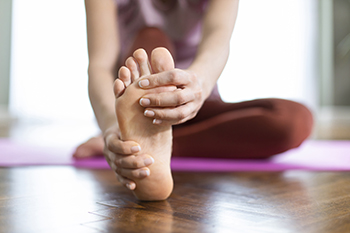
Despite their popularity, flip-flops can actually be a dangerous kind of shoe if they are worn for too long and during particularly strenuous physical activities. Although wearing flip-flops is associated with a number of different foot afflictions, it is of particular importance that flip-flops can cause toe pain. Flip-flops can cause toe pain because the design of the shoe offers almost no protection for the toes. Therefore, stubbing of the toes is perhaps more likely when wearing shoes like flip flops. Some individuals that damage their toes from wearing these shoes report a broken toe and even torn nail beds. One of the ways in which an individual can prevent developing these kinds of injuries is by protecting the toes in choosing footwear that provides protection over the toes. If you want to learn more about the connection between flip flops and toe pain, contact a podiatrist.
Flip-flops can cause a lot of problems for your feet. If you have any concerns about your feet or ankles, contact one of our podiatrists from Westside Podiatry Center, LLP. Our doctors will assist you with all of your foot and ankle needs.
Flip-Flops and Feet
Flip-flops have managed to become a summer essential for a lot of people. While the shoes may be stylish and easy to slip on and off, they can be dangerous to those who wear them too often. These shoes might protect you from fungal infections such as athlete’s foot, but they can also give you foot pain and sprained ankles if you trip while wearing them.
When Are They Okay to Wear?
Flip-flops should only be worn for very short periods of time. They can help protect your feet in places that are crawling with fungi, such as gym locker rooms. Athlete’s foot and plantar warts are two common fungi that flip-flops may help protect your feet against.
Why Are They Bad for My Feet?
These shoes do not offer any arch support, so they are not ideal for everyday use. They also do not provide shock absorption or heel cushioning which can be problematic for your feet. Additionally, you may suffer from glass cuts, puncture wounds, and stubbed toes since they offer little protection for your feet.
More Reasons Why They Are Bad for Your Feet
- They Slow You Down
- May Cause Blisters and Calluses
- Expose Your Feet to Bacteria
If you have any questions, please feel free to contact one of our offices located in Liverpool, Camillus, Skaneateles, Oswego, and Cicero, NY . We offer the newest diagnostic and treatment technologies for all your foot care needs.
Smelly Feet During Pregnancy
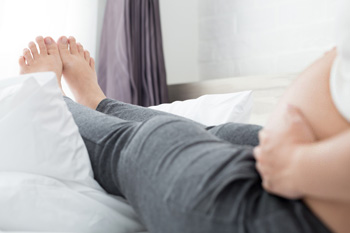
Every pregnant woman knows that bringing a child to term can significantly affect one’s feet. For example, the feet may exhibit increased swelling or pain. Additionally, the woman’s feet may also have increased foot odor. Foot odor, also known as bromodosis, can affect pregnant women because a woman’s feet can increase in size, causing her shoes to fit tightly, which reduces the air flow to the feet. There are a number of things that a pregnant woman might consider doing to mitigate increased foot odor. For example, one might try wearing a kind of moisture-wicking sock. The point of this is to reduce the extent to which moisture accumulates on the feet, as this can also lead to odor. If you are planning on becoming pregnant, it might be a good idea to schedule an appointment with a podiatrist to ensure that you are doing everything you can to keep your feet in good shape.
Pregnant women with swollen feet can be treated with a variety of different methods that are readily available. For more information about other cures for swollen feet during pregnancy, consult with one of our podiatrists from Westside Podiatry Center, LLP. Our doctors will attend to all of your foot and ankle needs.
What Foot Problems Can Arise During Pregnancy?
One problem that can occur is overpronation, which occurs when the arch of the foot flattens and tends to roll inward. This can cause pain and discomfort in your heels while you’re walking or even just standing up, trying to support your baby.
Another problem is edema, or swelling in the extremities. This often affects the feet during pregnancy but tends to occur in the later stages.
How Can I Keep My Feet Healthy During Pregnancy?
- Wearing orthotics can provide extra support for the feet and help distribute weight evenly
- Minimize the amount of time spent walking barefoot
- Wear shoes with good arch support
- Wear shoes that allow for good circulation to the feet
- Elevate feet if you experience swelling
- Massage your feet
- Get regular, light exercise, such as walking, to promote blood circulation to the feet
If you have any questions please feel free to contact one of our offices located in Liverpool, Camillus, Skaneateles, Oswego, and Cicero, NY . We offer the newest diagnostic and treatment technologies for all your foot and ankle needs.
Elderly Toenail Fungus

Aging is a risk factor for many diseases. Seniors take more medications, have weaker immune systems, and are more apt to suffer from pre-existing medical conditions, as well as mobility issues. While elderly nail fungus is not generally severe, it can be uncomfortable, and if left untreated, complications such as permanent nail damage or more serious infections can develop. Nail infections are caused by fungal organisms called fungi. These fungi can feed on keratin, present in the nails, hair, and skin. Such infections can also be caused by yeast and mold spores. The fungi get into the skin and nails from direct contact with infected materials, whether from animals, people, or clothes. Elderly nails are more likely to become brittle and have more cracks, and this makes it easier for the organisms to get inside and spread. Toenail fungus is more common than fingernail fungus. Symptoms typically include thick, discolored, brittle and damaged nails, with jagged edges and possibly a bad odor. Pain may also be present. Toenail fungus may be more prevalent in those with diabetes, recurring skin conditions, and circulation problems as these hinder the body’s ability to fight infection. If you are elderly or taking care of someone who has toenail fungus is a concern, contact a podiatrist who can help you with all foot and ankle-related conditions.
If left untreated, toenail fungus may spread to other toenails, skin, or even fingernails. If you suspect you have toenail fungus it is important to seek treatment right away. For more information about treatment, contact one of our podiatrists of Westside Podiatry Center, LLP. Our doctors can provide the care you need to keep you pain-free and on your feet.
Symptoms
- Warped or oddly shaped nails
- Yellowish nails
- Loose/separated nail
- Buildup of bits and pieces of nail fragments under the nail
- Brittle, broken, thickened nail
Treatment
If self-care strategies and over-the-counter medications does not help your fungus, your podiatrist may give you a prescription drug instead. Even if you find relief from your toenail fungus symptoms, you may experience a repeat infection in the future.
Prevention
In order to prevent getting toenail fungus in the future, you should always make sure to wash your feet with soap and water. After washing, it is important to dry your feet thoroughly especially in between the toes. When trimming your toenails, be sure to trim straight across instead of in a rounded shape. It is crucial not to cover up discolored nails with nail polish because that will prevent your nail from being able to “breathe”.
In some cases, surgical procedure may be needed to remove the toenail fungus. Consult with your podiatrist about the best treatment options for your case of toenail fungus.
If you have any questions, please feel free to contact one of our offices located in Liverpool, Camillus, Skaneateles, Oswego, and Cicero, NY . We offer the newest diagnostic and treatment technologies for all your foot care needs.
More...
Study Finds Link Between Weight and Level of Foot Pain
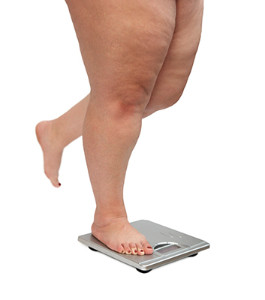 According to findings presented at the American College of Rheumatology Annual Meeting, patients with higher weights are more susceptible to foot pain. Instructor of Medicine Alyssa B. Dufour of Harvard Medical School and her colleagues studied 28 different measures over 57 years to identify the trajectories of weight in the Framingham Foot Study. After five such trajectories were established, patterns began to develop that showed a correlation between higher weight over time and higher levels of foot pain.
According to findings presented at the American College of Rheumatology Annual Meeting, patients with higher weights are more susceptible to foot pain. Instructor of Medicine Alyssa B. Dufour of Harvard Medical School and her colleagues studied 28 different measures over 57 years to identify the trajectories of weight in the Framingham Foot Study. After five such trajectories were established, patterns began to develop that showed a correlation between higher weight over time and higher levels of foot pain.
Obesity has become very problematic at this point in time and can have extremely negative effects on the feet. If you’re an obese individual and are concerned about your feet, contact one of our podiatrists from Westside Podiatry Center, LLP. Our doctors can provide the care you need to keep you pain-free and on your feet.
Obesity and Your Feet
Since your feet are what support your entire weight when standing, any additional weight can result in pain and swelling. Being overweight is one of the main contributors to foot complications.
Problems & Complications
Extra Weight – Even putting on just a few extra pounds could create serious complications for your feet. As your weight increases, your balance and body will shift, creating new stresses on your feet. This uneven weight distribution can cause pain, even while doing the simplest tasks, such as walking.
Diabetes – People who are overweight are at serious risk of developing type-2 diabetes, which has a drastic impact on the health of your feet. As you get older, your diabetes might worsen, which could lead to loss of feeling in your feet, sores, and bruises. You could also become more prone to various infections.
Plantar fasciitis – Pressure and stress that is placed on muscles, joints, and tendons can trigger plantar fasciitis, which is an inflammation of tissue that forms along the bottom of the foot.
If you have any questions please feel free to contact one of our offices located in Liverpool, Camillus, Skaneateles, Oswego, and Cicero, NY . We offer the newest diagnostic and treatment technologies for all your foot and ankle needs.
Possible Causes of Gout
 Patients who are afflicted with gout are aware of the intense pain that accompanies this condition. The part of the foot that is most often affected is the side of the big toe. When a gout attack occurs, the joints in the big toe become inflamed and produce severe pain and discomfort. A common reason why gout attacks occur can be a result of foods that are eaten that have elevated purine levels. These types of foods can include red meat, shellfish, and drinks that have high sugar levels. This may play a significant role in causing crystals to form in the joints of the big toe, and it may become red and swollen. Genetic factors may contribute to the onset of gout, in addition to existing medical conditions such as diabetes and high blood pressure. Preventive measures can be implemented that may help reduce gout attacks from occurring. These can consist of eating healthy foods that have low purine levels, and incorporating a gentle exercise program into your daily routine. If you are prone to experiencing gout attacks, it is strongly advised that you consult with a podiatrist who can properly treat this condition.
Patients who are afflicted with gout are aware of the intense pain that accompanies this condition. The part of the foot that is most often affected is the side of the big toe. When a gout attack occurs, the joints in the big toe become inflamed and produce severe pain and discomfort. A common reason why gout attacks occur can be a result of foods that are eaten that have elevated purine levels. These types of foods can include red meat, shellfish, and drinks that have high sugar levels. This may play a significant role in causing crystals to form in the joints of the big toe, and it may become red and swollen. Genetic factors may contribute to the onset of gout, in addition to existing medical conditions such as diabetes and high blood pressure. Preventive measures can be implemented that may help reduce gout attacks from occurring. These can consist of eating healthy foods that have low purine levels, and incorporating a gentle exercise program into your daily routine. If you are prone to experiencing gout attacks, it is strongly advised that you consult with a podiatrist who can properly treat this condition.
Gout is a painful condition that can be treated. If you are seeking treatment, contact one of our podiatrists from Westside Podiatry Center, LLP. Our doctors will treat your foot and ankle needs.
What Is Gout?
Gout is a form of arthritis that is characterized by sudden, severe attacks of pain, redness, and tenderness in the joints. The condition usually affects the joint at the base of the big toe. A gout attack can occur at any random time, such as the middle of the night while you are asleep.
Symptoms
- Intense Joint Pain - Usually around the large joint of your big toe, and it most severe within the first four to twelve hours
- Lingering Discomfort - Joint discomfort may last from a few days to a few weeks
- Inflammation and Redness -Affected joints may become swollen, tender, warm and red
- Limited Range of Motion - May experience a decrease in joint mobility
Risk Factors
- Genetics - If family members have gout, you’re more likely to have it
- Medications - Diuretic medications can raise uric acid levels
- Gender/Age - Gout is more common in men until the age of 60. It is believed that estrogen protects women until that point
- Diet - Eating red meat and shellfish increases your risk
- Alcohol - Having more than two alcoholic drinks per day increases your risk
- Obesity - Obese people are at a higher risk for gout
Prior to visiting your podiatrist to receive treatment for gout, there are a few things you should do beforehand. If you have gout you should write down your symptoms--including when they started and how often you experience them, important medical information you may have, and any questions you may have. Writing down these three things will help your podiatrist in assessing your specific situation so that he or she may provide the best route of treatment for you.
If you have any questions, please feel free to contact one of our offices located in Liverpool, Camillus, Skaneateles, Oswego, and Cicero, NY . We offer the newest diagnostic and treatment technologies for all your foot care needs.
Ways Seniors Can Prevent Falling
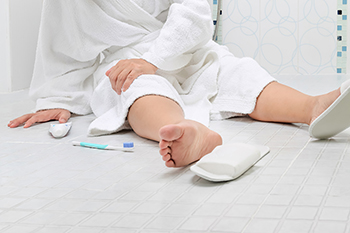
Preventing a fall is paramount for seniors, and luckily experts can recommend a number of ways to do just that. Fall-proofing the home environment is first on the list. Start by decluttering floors and narrow hallways, and choose chairs that are stable. Avoid sitting on low chairs, sofas, folding chairs, and chairs on wheels that may affect your balance. Install nightlights in hallways and lamps beside your bed, as well as adding grab bars in tub and shower areas. Remove throw rugs or loose carpeting. Other fall prevention tips include wearing shoes with non-skid soles, avoiding loose clothing that may get caught on something, and going barefoot or wearing just socks when walking in the house. Further, it’s a good idea to review medications for side-effects, such as dizziness or drowsiness, that may contribute to a fall. Having eyeglasses prescriptions updated is recommended. If you have neuropathy, arthritis, or any other foot and ankle conditions that affect your stability when standing or walking, please visit a podiatrist for information on walking aids or devices that may help.
Preventing falls among the elderly is very important. If you are older and have fallen or fear that you are prone to falling, consult with one of our podiatrists from Westside Podiatry Center, LLP. Our doctors will assess your condition and provide you with quality advice and care.
Every 11 seconds, an elderly American is being treated in an emergency room for a fall related injury. Falls are the leading cause of head and hip injuries for those 65 and older. Due to decreases in strength, balance, senses, and lack of awareness, elderly persons are very susceptible to falling. Thankfully, there are a number of things older persons can do to prevent falls.
How to Prevent Falls
Some effective methods that older persons can do to prevent falls include:
- Enrolling in strength and balance exercise program to increase balance and strength
- Periodically having your sight and hearing checked
- Discuss any medications you have with a doctor to see if it increases the risk of falling
- Clearing the house of falling hazards and installing devices like grab bars and railings
- Utilizing a walker or cane
- Wearing shoes that provide good support and cushioning
- Talking to family members about falling and increasing awareness
Falling can be a traumatic and embarrassing experience for elderly persons; this can make them less willing to leave the house, and less willing to talk to someone about their fears of falling. Doing such things, however, will increase the likelihood of tripping or losing one’s balance. Knowing the causes of falling and how to prevent them is the best way to mitigate the risk of serious injury.
If you have any questions, please feel free to contact one of our offices located in Liverpool, Camillus, Skaneateles, Oswego, and Cicero, NY . We offer the newest diagnostic and treatment technologies for all your foot care needs.
Surgery May Be Necessary for Permanent Relief From an Ingrown Toenail

An ingrown toenail is generally a painful foot condition. It has noticeable symptoms, and occurs as a result of the toenail growing into the surrounding skin instead of over it. The affected skin is often swollen and will appear to be red. In severe cases, an infection may set in, possibly causing bleeding. Wearing shoes that do not fit correctly can contribute significantly to developing an ingrown toenail, or it may come from genetic reasons. Many patients notice that the toe feels better when it is soaked in warm water, which can help to soften the skin. This may bring mild temporary relief, but you may ultimately need to visit a podiatrist for permanent relief. To achieve this, surgery may be necessary, and this involves removing the nail border. The purpose of this is to prevent potential damage to the soft tissues. If you have developed an ingrown toenail, it is strongly suggested that you visit a podiatrist as quickly as possible who can offer you correct treatment options, in addition to possibly performing surgery.
Ingrown toenails can become painful if they are not treated properly. For more information about ingrown toenails, contact one of our podiatrists of Westside Podiatry Center, LLP. Our doctors can provide the care you need to keep you pain-free and on your feet.
Ingrown Toenails
Ingrown toenails occur when a toenail grows sideways into the bed of the nail, causing pain, swelling, and possibly infection.
Causes
- Bacterial infections
- Improper nail cutting such as cutting it too short or not straight across
- Trauma to the toe, such as stubbing, which causes the nail to grow back irregularly
- Ill-fitting shoes that bunch the toes too close together
- Genetic predisposition
Prevention
Because ingrown toenails are not something found outside of shoe-wearing cultures, going barefoot as often as possible will decrease the likeliness of developing ingrown toenails. Wearing proper fitting shoes and using proper cutting techniques will also help decrease your risk of developing ingrown toenails.
Treatment
Ingrown toenails are a very treatable foot condition. In minor cases, soaking the affected area in salt or antibacterial soaps will not only help with the ingrown nail itself, but also help prevent any infections from occurring. In more severe cases, surgery is an option. In either case, speaking to your podiatrist about this condition will help you get a better understanding of specific treatment options that are right for you.
If you have any questions please feel free to contact one of our offices located in Liverpool, Camillus, Skaneateles, Oswego, and Cicero, NY . We offer the newest diagnostic and treatment technologies for all your foot and ankle needs.
